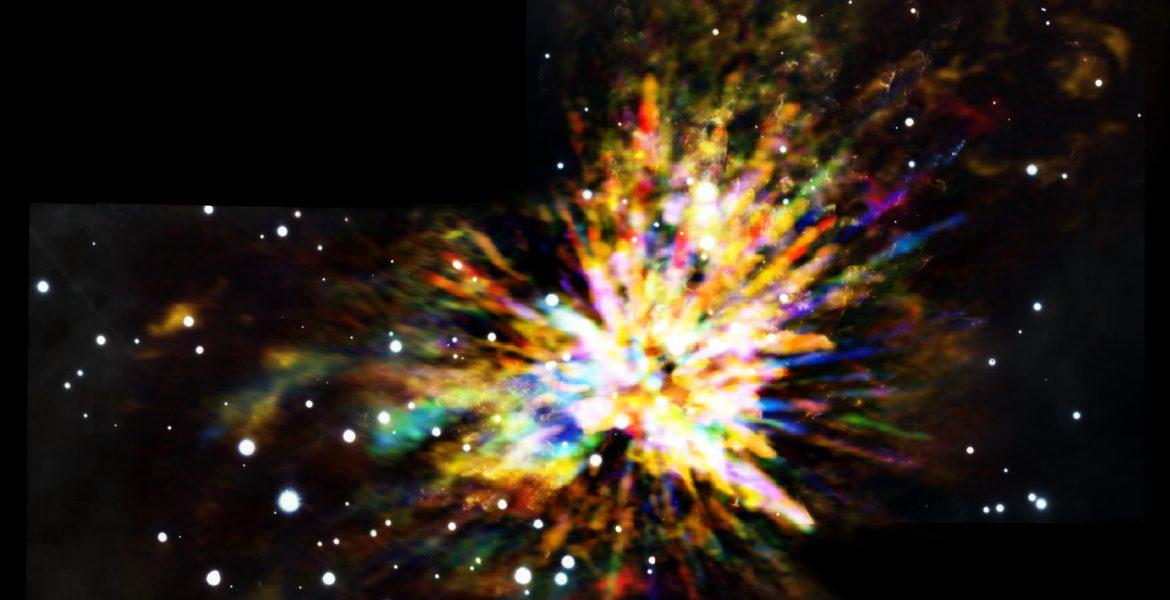'Stellar fireworks' of two stars colliding 500 years ago captured in stunning images
The crash sent out as much energy as our sun does in 10 million years

A new picture shows the "stellar fireworks" of a collision of stars: with beautiful suns flung off in all directions and streaming colours of gas.
Astronomers have captured images of a crash between two young protostars that tore the entire area around them apart.
Shortly after the two stars formed, around 100,000 years ago, several protostars latched onto each other and started to be drawn together by gravity.
Eventually, the two of them grazed up against each other and started an explosion that saw streams of stars and gas thrown across the universe. That resulted in the spectacular stellar fireworks show that is visible from the Earth today — 500 years after it happened.
“What we see in this once calm stellar nursery is a cosmic version of a 4th of July fireworks display, with giant streamers rocketing off in all directions,” said John Bally, who was a lead author on a paper describing the work, which used the Atacama Large Millimeter/submillimeter Array (ALMA).
The spectacular show is only around for a relatively short period of time, in cosmic terms. The display will have gone within a few centuries, according to the researchers.
And the explosions might help keep too many stars from forming.
“Though fleeting, protostellar explosions may be relatively common,” said Bally. “By destroying their parent cloud, as we see in OMC-1, such explosions may also help to regulate the pace of star formation in these giant molecular clouds.”
Join our commenting forum
Join thought-provoking conversations, follow other Independent readers and see their replies
Comments
Bookmark popover
Removed from bookmarks